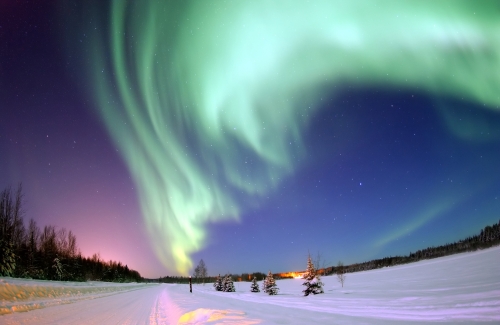It may look like a static yellow ball from here, but in reality the Sun is alive with activity. Right now it is becoming more active each day as we get closer to the next solar maximum, which is expected to peak in July 2013. However, a couple of years ago it was quieter than it had been for nearly a century. It had very few sunspots and radiated very little energy. This variation is normal — the Sun goes through regular cycles where its activity and number of sunspots go up and then down again. What was unusual was the depth of this solar minimum.
Dibyendu Nandy, from the Indian Institute of Science Education and Research in West Bengal, and colleagues Andres Munoz-Jaramillo and Petrus Martens, from Montana State University, think they might have found the reason for this almost unprecedented solar calm.
Each solar cycle lasts roughly 11 years. After this time, its magnetic field flips over. After two cycles the magnetic field has flipped twice and it ends up back where it started. During these cycles the amount of solar activity goes up and down too.
Sunspots are a good measure of the amount of activity going on in the Sun at any point, and the number of sunspots on the Sun follow the 11 year solar cycles; there are more sunspots at a solar maximum and less at a minimum. A sunspot’s magnetic field is very strong and stops the transfer of heat from the interior of the Sun to the surface. Sunspots look dark because this loss of heat makes them cooler than their surroundings. In fact the surrounding area is brighter than it would be without the sunspot. This means that, counterintuitively, the more sunspots there are on the Sun, the more energy radiates out of it — even though it looks darker than usual.

Spotless days in red, number of sunspots in blue. Only cycle 14 had a deeper minimum than the last one (cycle 23). Credit: Nandy et al, Nature, 3rd March 2011
The last solar minimum was unusual because there were a very high number of days — about 800 — without any sunspots at all. Nandy and colleagues created a computer model to try to work out why this happened.
They found that great loops of electrical current, which flow in the plasma that makes up the Sun, were interfering with the formation of new sunspots. In a plasma, the electrons have been stripped away from their atoms, leaving them free to move about and conduct such currents. The currents flow around the surface of the Sun, going down into the interior at the poles and resurfacing at the equator. Dying sunspots get dragged underneath the surface, where their magnetic field is given a boost. They are then sent back up to the top to form a new sunspot.
During a deep solar minimum, however, it doesn’t quite happen like this. In the first half of the solar cycle the plasma flows quickly, but in the second half it slows down. This fast movement at the start stops strong magnetic fields forming inside the Sun, so that it eventually runs out of steam and stops making sunspots during that cycle. The slow plasma flow afterwards means that the formation of the next lot of sunspots takes a bit longer to get going that usual.
This all adds up to long stretches of time without a single spot on the surface of the Sun.
The team’s simulation, which modelled this physics, reproduced what we saw during the last solar minimum, showing that very deep solar minima are generally linked to the Sun’s weakened magnetic field.
Being able to predict when solar minima like this are going to occur is a very useful thing. When the Sun’s magnetic field is weakened, so is the solar wind. The solar wind is a stream of charged particles that are ejected from the Sun’s atmosphere and into space, and is responsible for aurorae, geomagnetic storms and the tails of comets, amongst other things. It also stops lots of cosmic rays getting into the solar system. When the Sun’s magnetic field is weakened, the solar wind lets more cosmic rays through, making space a more dangerous place. This new model will hopefully mean we can predict hazardous changes in space weather and plan missions accordingly.
Reference
Nandy D, Muñoz-Jaramillo A, & Martens PC (2011). The unusual minimum of sunspot cycle 23 caused by meridional plasma flow variations. Nature, 471 (7336), 80-2 PMID: 21368827
Links
3D Sun iPhone app for photos and videos of the latest solar activity — very cool (hat tip to @Psycasm for telling me about this)
Sunspot plotter — find the number of sunspots on any day back to Jan 1st 1755
NASA animations of plasma flows and the sunspots they create









